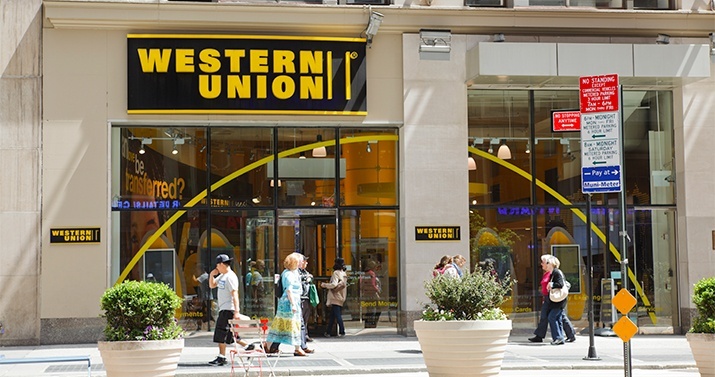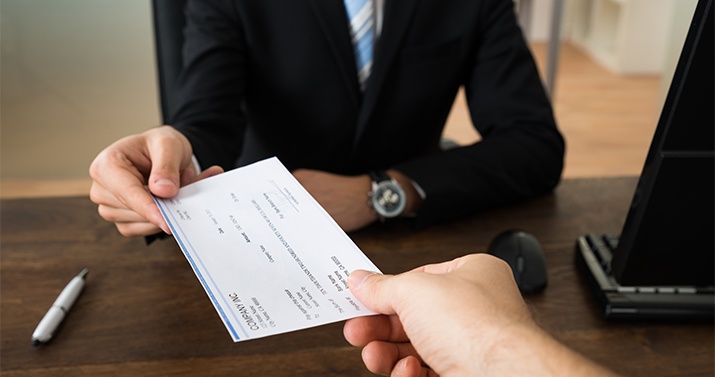Money Orders Vs. Cashier’s Checks: Which Option Should You Choose?
When a seller wants a form of payment that is historically secure and offers guaranteed funds from a buyer, they turn to money orders or cashier’s checks. While both types of payment serve the same purpose, if a seller has given you a choice between the two – which should you use? We’ve broken down the difference between a money order and cashier’s check so that you can make the best decision for your situation.
How a money order works
 Cost
Cost
A money order is a prepaid document that resembles a check. You simply have to walk into a supplier, request a money order, pay for it upfront, and then you can leave with the paper document to give to the payee. Since it is generated by a third party, the money order will not contain any of your sensitive personal information on the document, but you will have to fill in the payee’s information yourself. The main drawback to a money order is that there are strict limits on the amount of money that can be guaranteed by this method. Most suppliers will only provide money orders as high as $1,000.
Money orders are generally less expensive than cashier’s checks. One popular location to obtain a money order is Wal-Mart. They only charge $0.70 per transaction! One of the more expensive options is the United States Postal Service, which charges as high as a $1.60 per transaction.
You can pay for a money order with cash, a debit card, or even a credit card cash advance (although we don’t recommend that method due to high fees). If you buy a money order at your own financial institution, they can pull the funds directly from your account. Make sure to ask if they have any member rewards programs that waive the cost of the money order, and if your account qualifies.
Where to buy
Money orders are widely available at a variety of businesses including:
- Supermarkets
- Convenience stores
- Pharmacies
- Post offices
- Financial institutions
How a cashier’s check works
 Cost
Cost
A cashier’s check is a form of payment that is only provided by financial institutions like banks or credit unions. They often only provide this service to customers or members, and back the funds themselves. This provides an extra layer of security for the payee. A cashier’s check looks similar to a money order, but the financial institution will cut the check and fill in all pertinent information, including the amount and payee line. Cashier’s checks are commonly used for large purchases, like a down payment on a home, because they do not have strict caps on the amount of a transaction.
Cashier’s checks generally cost more than a money order. The average cost is around $10 per cashier’s check. However, since you can cut a cashier’s check for substantially more money than $1,000, it could actually end up being more cost-effective depending on the amount of money you need. Rather than buying multiple money orders and paying the transaction fee each time, you could buy one cashier’s check and only have to pay one transaction fee.
Where to buy
This form of payment is only available at financial institutions, and often only for account holders at those institutions. They will pull the funds directly from your account, or you could choose to pay in cash. Make sure you bring identification to prove you’re an account holder, double-check that you have the funds in your account to pay for the cashier’s check, and know exactly how the payee wants the recipient information filled out.
For AmeriChoice Members
You can get a money order and/or cashier’s check at any AmeriChoice location for only $5. If you’re a Stars or Stripes level in our membership rewards program, you can get that same money order and/or cashier’s check for FREE!
Which option should you choose?
 Because of these reasons, we recommend using a money order if you only need a method of secure payment for $1,000 or less. If you require a much larger sum of money, we recommend buying a cashier’s check from your local financial institution.While money orders are generally more easily accessible and incur less fees, they do have strict limits on the amount of money that can be guaranteed on one money order. While cashier’s checks can be made out for extremely large sums of money and are backed by trusted financial institutions, they incur larger fees and are not as easily accessible.
Because of these reasons, we recommend using a money order if you only need a method of secure payment for $1,000 or less. If you require a much larger sum of money, we recommend buying a cashier’s check from your local financial institution.While money orders are generally more easily accessible and incur less fees, they do have strict limits on the amount of money that can be guaranteed on one money order. While cashier’s checks can be made out for extremely large sums of money and are backed by trusted financial institutions, they incur larger fees and are not as easily accessible.
Helpful tips

- For more helpful tips and advice about popular financial topics, subscribe to our Cents to Save blog! You’ll receive updates straight to your inbox from our team of experts. Sign up today!Keep the receipt of your money order or cashier’s check until the payment has gone through. If the document is lost or stolen, the receipt will give you a chance at a refund before the funds are cashed.
- It is next to impossible to get these types of payment online. Always try to go to the store or bank in-person to get a money order or cashier’s check.
- Know the exact amount the recipient is requesting and how the payee line should be filled out before purchasing this type of payment.
- Educate yourself on common scams associated with cashier’s checks and money orders so that you don’t unwittingly become a victim!
-2.png?width=300&height=65&name=AFCU-logo-2019-white-sm%20(1)-2.png)